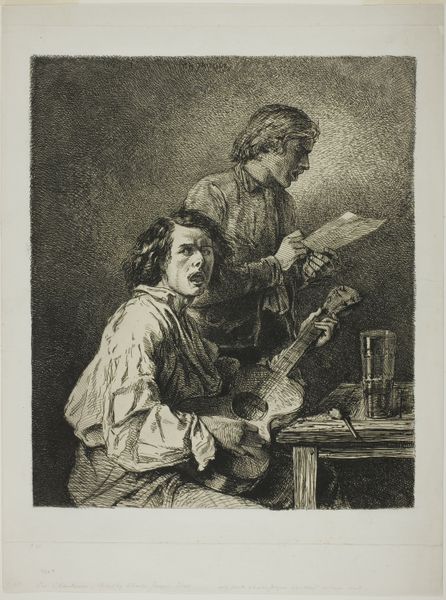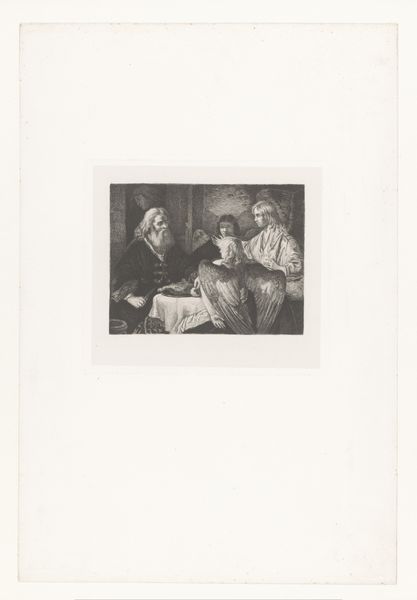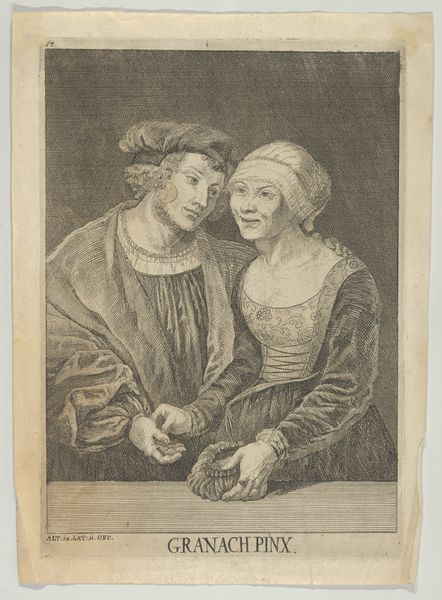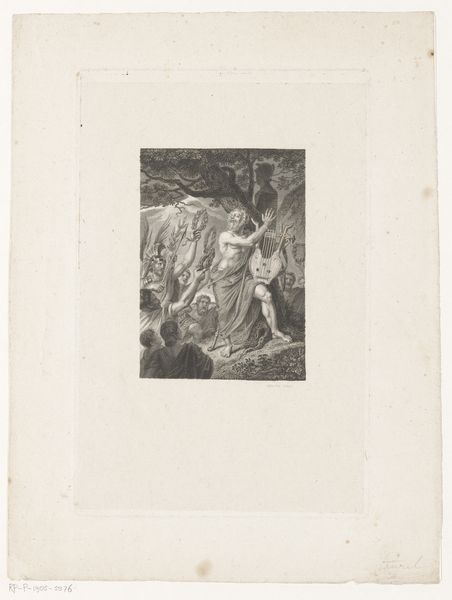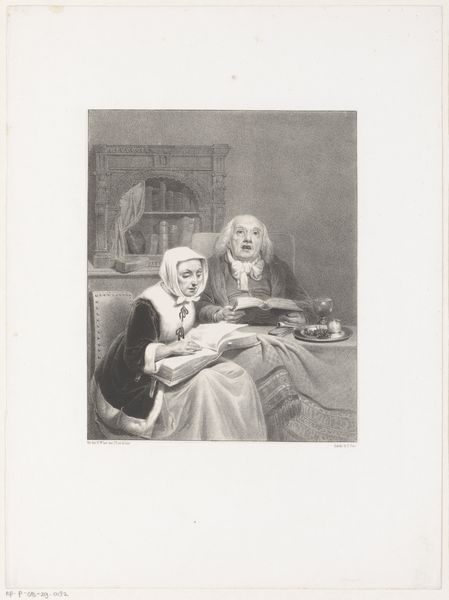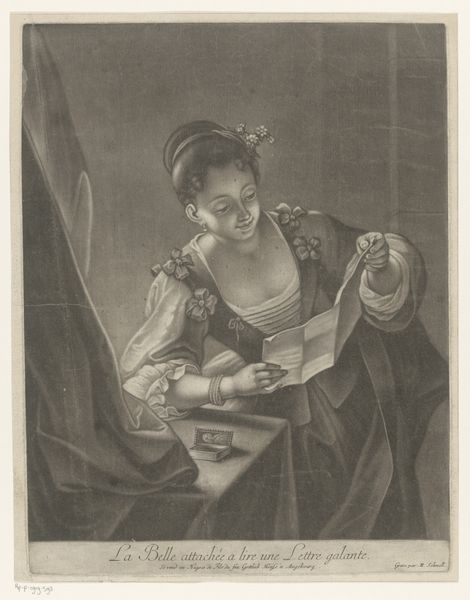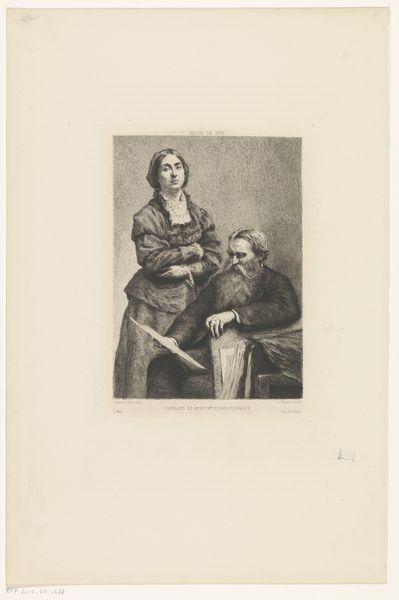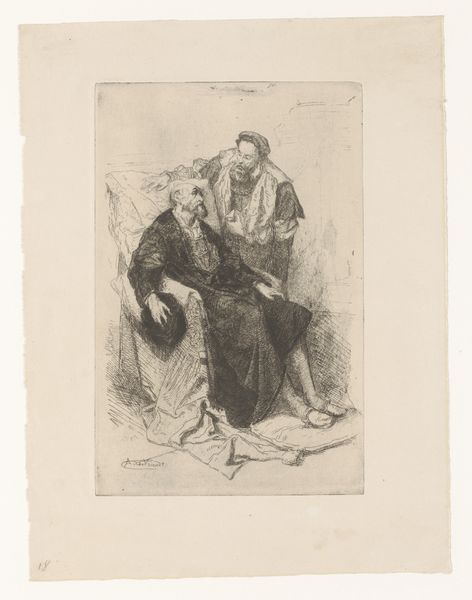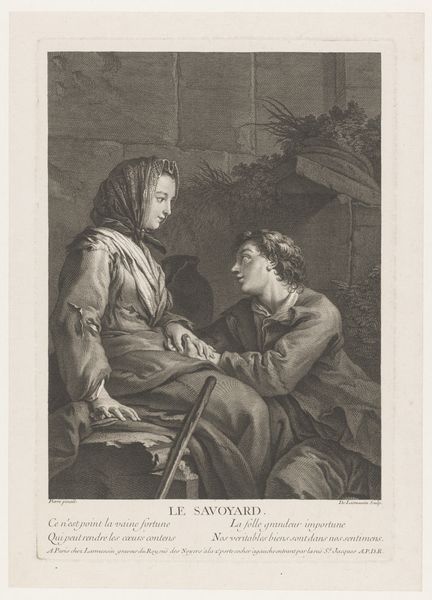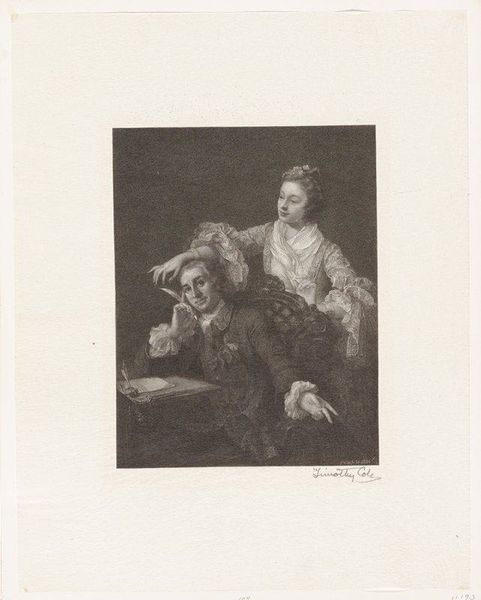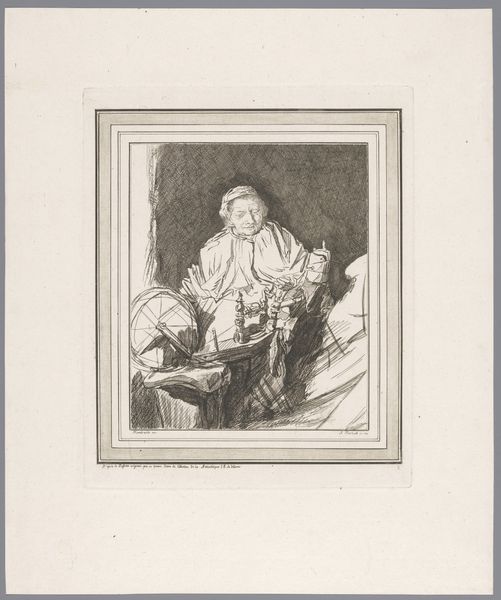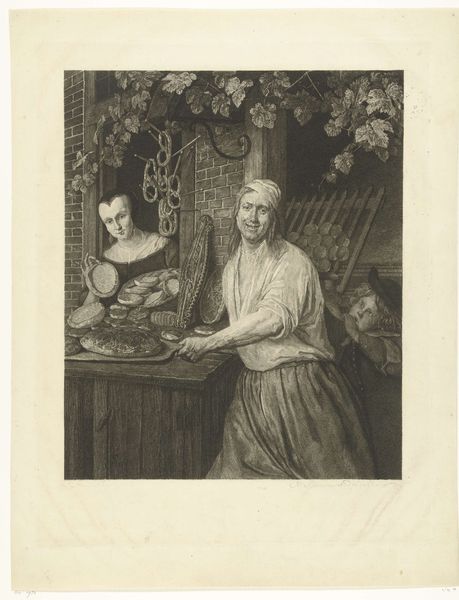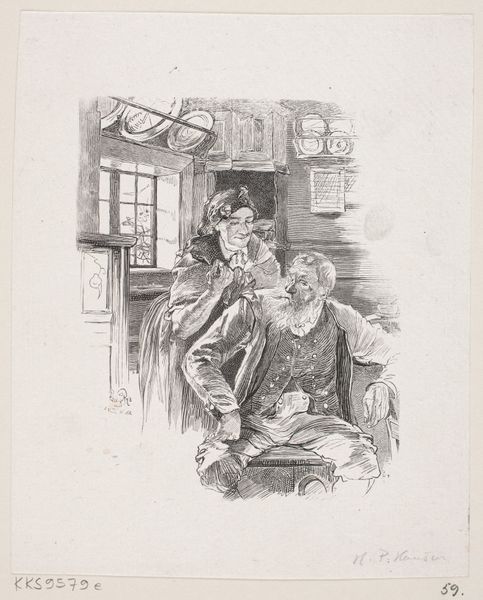
#
picture layout
#
wedding photograph
#
photo restoration
#
photo element
#
expressing emotion
#
joyful generate happy emotion
#
historical photography
#
strong emotion
#
yellow element
#
photo layout
Dimensions: height 347 mm, width 253 mm
Copyright: Rijks Museum: Open Domain
Editor: This is "Dubbelportret van Wolf Tobias Huth en zijn vrouw Susanna Johanna Huth," a double portrait from 1735 by Bernhard Vogel. It feels very posed, very deliberate, yet there's something almost playful about it. What do you see in this piece, especially concerning how it might have been viewed back then? Curator: It's a fascinating study in societal roles, wouldn't you agree? Consider the iconography: the books behind Wolf suggest intellect and status, framing him as a man of thought, while Susanna's gesture, her hand on his shoulder, conveys support, perhaps even a guiding influence, which departs slightly from pure patriarchal norms of that era. Editor: That’s an interesting way to think about it. It’s like the symbols are revealing layers beyond the immediate visual representation of a husband and wife. Does her placement behind him diminish her power though? Curator: Not necessarily, if we consider it through the lens of protective care. Is she restricting or safeguarding him? This image plays with expectations, does it not? Their gaze, averted but directed toward us, implicates the viewer. Consider the ornate headwear. Does that suggest any connections to social class and standing within their community? Editor: Yes, it really emphasizes wealth and belonging. Thinking about how all these elements interact, it paints a much fuller picture than just a snapshot of a couple. Curator: Precisely! By examining those threads of visual language we can weave a deeper narrative about their place in the world. A simple portrait becomes a rich cultural document, wouldn't you say? Editor: Absolutely. I learned so much about the power of visual storytelling from a single piece of art.
Comments
No comments
Be the first to comment and join the conversation on the ultimate creative platform.
